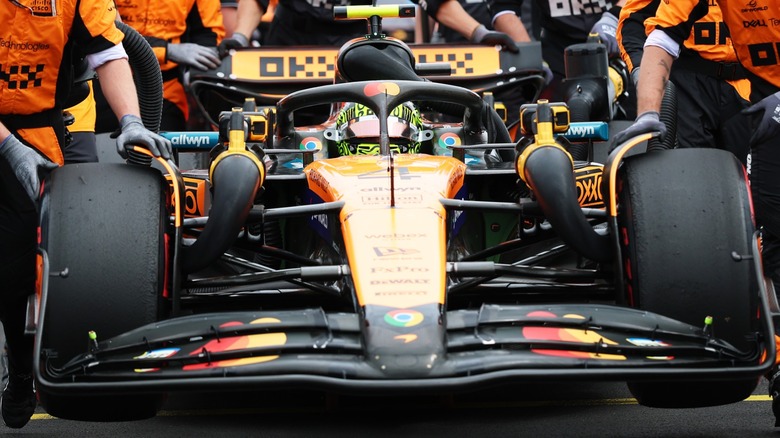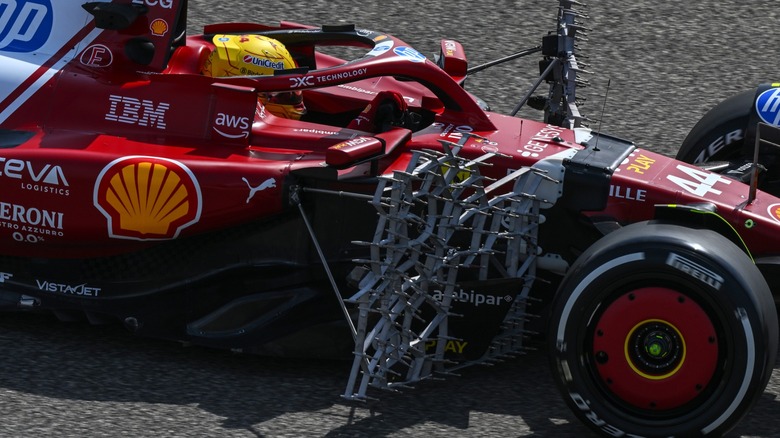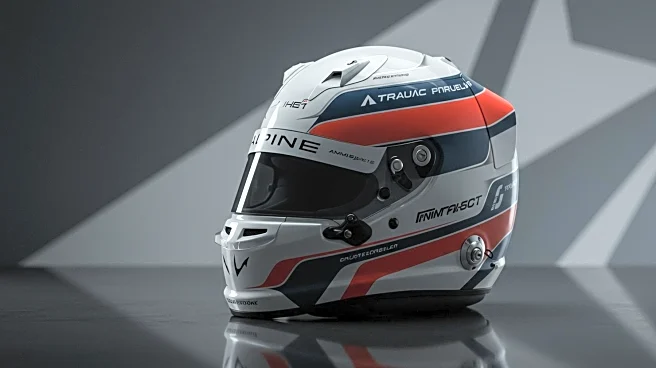
Casual fans of Formula 1 might think having one of the sport's fastest cars or best drivers all-time is the key to success, but one of the things beginners should know about F1 is that it's a sport for engineers. Teams have dozens of engineers working to keep the car stable and fast while adhering to a library's worth of complex regulations. In order to shave valuable milliseconds from lap times, these team members work to maximize each car's aerodynamics to deliver the ideal combination of speed
and downforce. F1 cars are intricate machines, sculpted so that every single surface or feature guides wind in a favorable direction. At speeds well over 200 miles per hour, even a tiny bit of drag can slow a car down significantly.
Teams constantly adjust their strategies and cars to work with the wind, sometimes in real time.That's where the pitot tube comes in; it looks like a vertically-mounted antenna on the car's nose, but it actually works like pitot tubes on airplanes, which help indicate airspeed by measuring the velocity of airflow past the tube. F1 teams capture that data from the front of a car, compare it with the car's recorded speed at each moment, and use the information to make adjustments to the car or race strategy.
Read more: 5 Of The Coolest Cars From American Graffiti
F1 Teams Use Pitot Tube Arrays For Testing

Now that you know what one pitot tube can do, imagine a mesh of them. If you've ever watched pre-season testing or a free practice session, you've probably seen a Formula 1 car taking laps covered in what looks like scaffolding. Those sensor grids are called aero rakes. They're typically loaded with pitot tubes and pressure-sensing Kiel probes to collect detailed airflow data. These rigs help engineers understand how exactly the air moves around different parts of the car; remember, a wind tunnel and a computer simulation can only get you so far.
Once a car hits the track, factors like turbulence, heat, tire deformation, and unpredictable wind can affect how a car performs. Data collected from aero rakes is usually compared to simulations to validate and adjust the car's aerodynamic setup. While pitot tubes look like antennae, the massive amount of telemetry data from F1 cars is transmitted to the pits via a sturdier t-shaped antenna mounted on the airbox just above and behind the driver's head. Processing this data along with information captured by the pitot tube is an important part of any F1 team's efforts.
Want the latest in tech and auto trends? Subscribe to our free newsletter for the latest headlines, expert guides, and how-to tips, one email at a time.
Read the original article on SlashGear.











